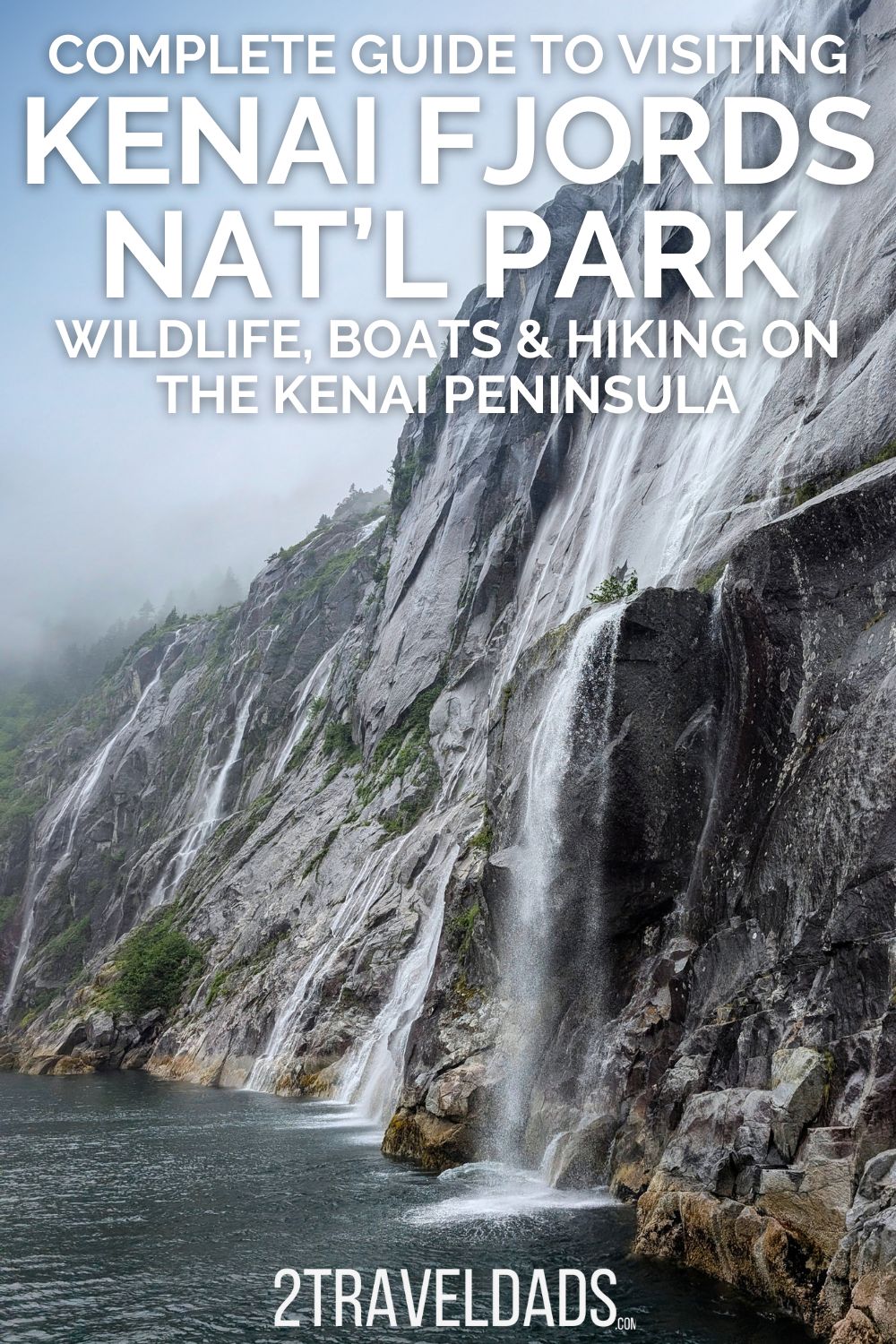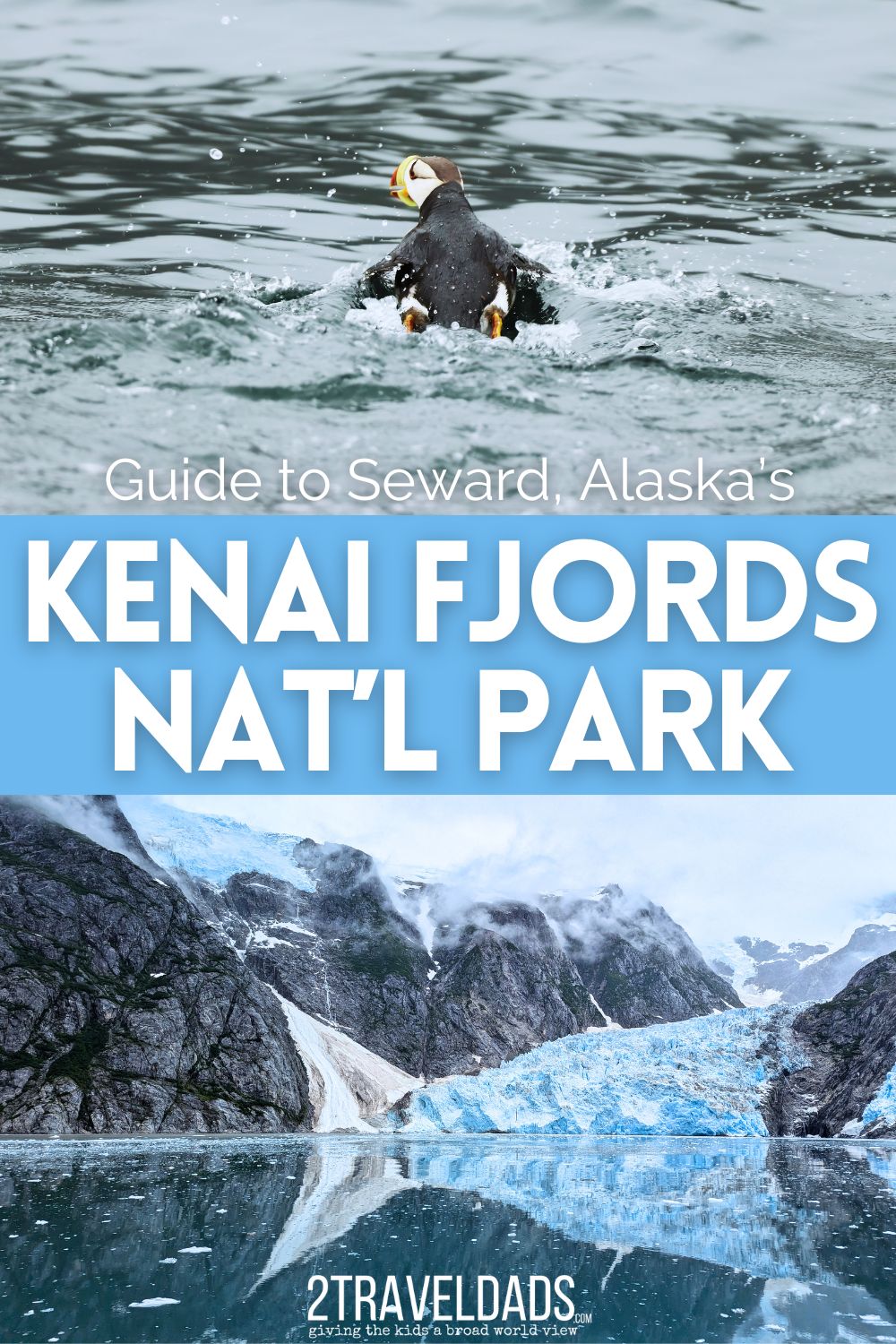I’ve been to Kenai Fjords National Park no fewer than 20 times. It’s in my top five favorite National Parks close behind Hawaii Volcanoes NP, Yellowstone, Glacier NP and Dry Tortugas National Park. Kenai Fjords is wonderfully unique in that much of it is only accessible / viewable from the water, which makes experiencing the park an adventure.
With so many visits, including exploring Kenai Fjords National Park (KFNP) with our kids, we’ve got lots of information and tips for making your time at the park awesome, including exploring Seward a bit. If you have any questions about KFNP or planning a trip to the Kenai Peninsula, please leave a comment or send us a note. We’re always happy to help others plan awesome adventures!
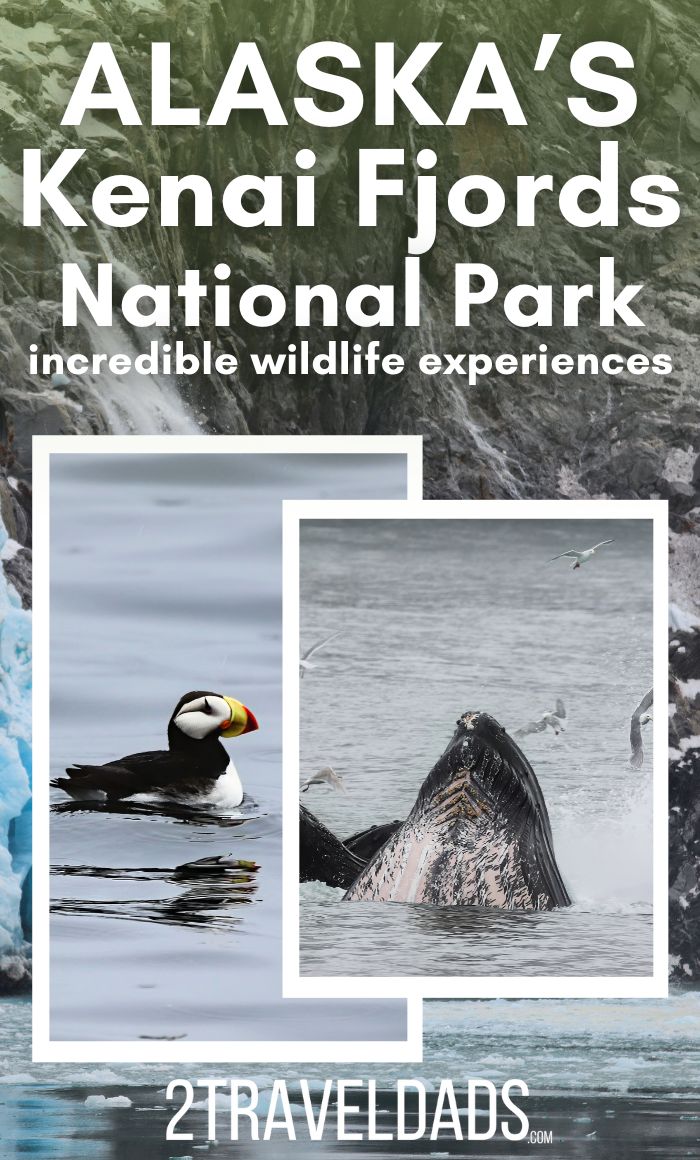
All About Kenai Fjords National Park
Kenai Fjords National Park is approximately 670,000 acres on the Kenai Peninsula, with Seward, Alaska being the launch point for most visits. It’s been one of my favorite National Parks for a long time, since I first visited more than 20 years ago. It’s only been a National Park since 1980, so its relative newness and remote location make it less visited than most other parks, but it’s essential to a good Alaska road trip itinerary.
What makes it such an unusual park is that very little of it is accessible on land. Kenai Fjords National Park is primarily explored on the water or if you’re an adventurous climber/icefield explorer. There are two elements that really stand out to me for what makes Kenai Fjords so special to visit: wildlife and glaciers. We visited Glacier Bay National Park on our UnCruise Wilderness Legacy sailing and it was beautiful and unique in its own way, but both the glacier and wildlife experiences at Kenai Fjords National Park absolutely top those of Glacier Bay.
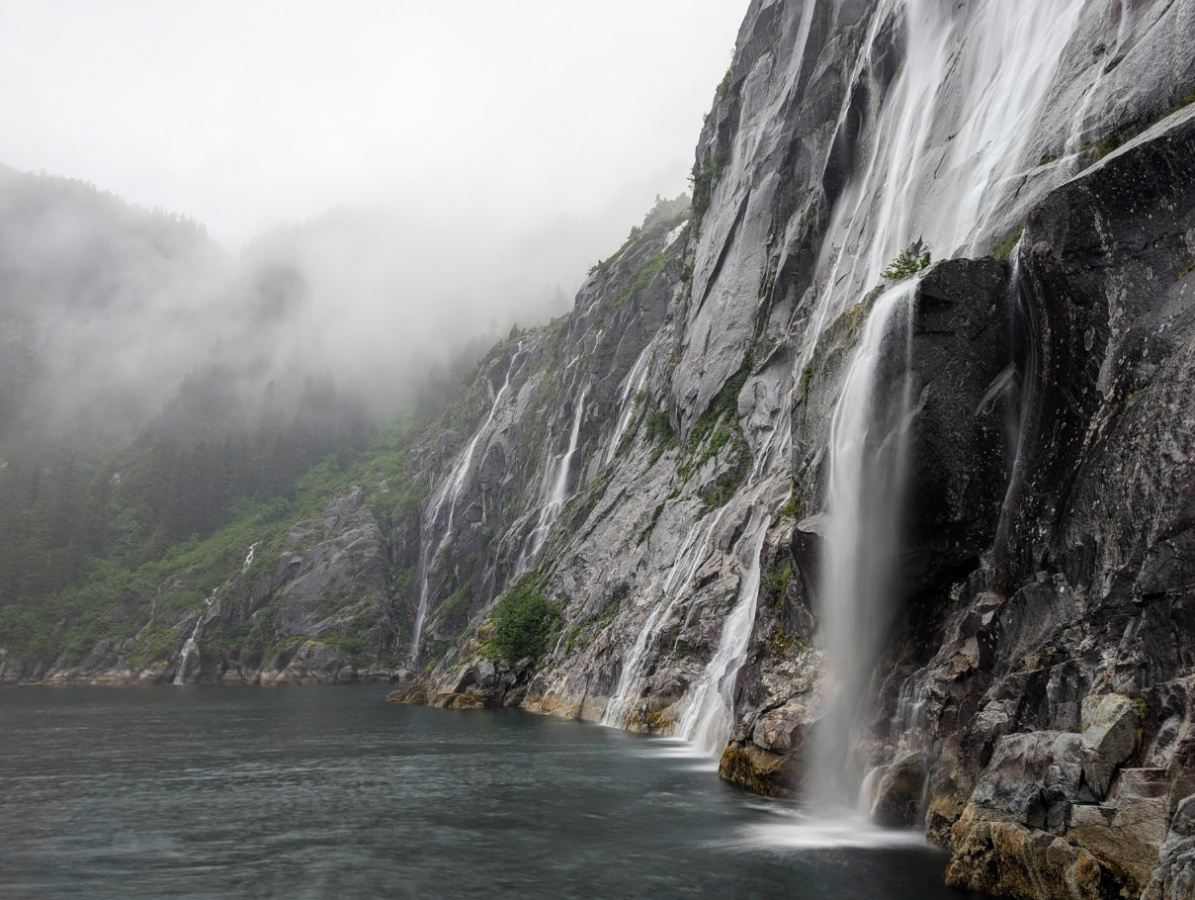
Where is Kenai Fjords National Park?
Seward and the launch point for visiting Kenai Fjords National Park is 126 miles south of Anchorage, beyond the Turnagain Arm and through the mountains. You can travel by vehicle as part of a fun Alaska road trip, the Alaska Railroad from Denali or Anchorage, or you can end an Alaskan cruise in Seward. If you’re visiting as part of the land tour portion of a cruise, there are transportation options around the Kenai Peninsula and its lodges to ensure you can get to Seward to tour KFNP.
Fun fact: I used to be a driver guide in Alaska shuttling visitors from Cooper Landing on the Kenai River to Seward for the Kenai Fjords tours. It was one of my favorite jobs ever.
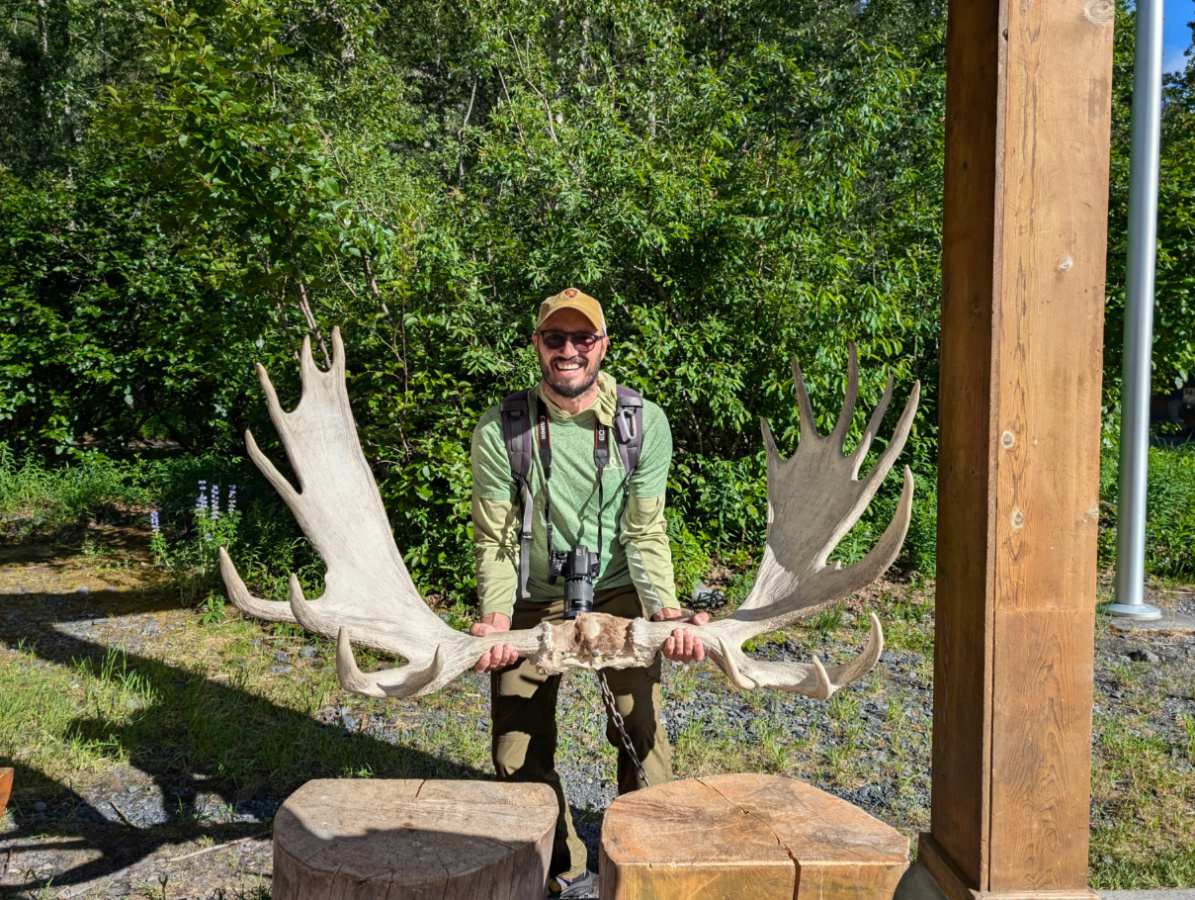
Can Kenai Fjords be accessed by road?
Yes, Kenai Fjords can be accessed by road in one area. The popular Exit Glacier area is accessible via road, though the road is closed during winter months. You get to the turn off for Exit Glacier just before you get into the actual town of Seward. You’ll pass the Seward Windsong Lodge and drive along the Resurrection River, arriving at the parking area after about 8 miles.
And YES, there is a National Park entrance sign to stop at here on the road to Exit Glacier. There is plenty of space to pull off for photos, which are best earlier in the day. There are no entrance fees for visiting Kenai Fjords National Park via Exit Glacier, but for the boat tours to the different areas, you must purchase tickets (usually in advance).
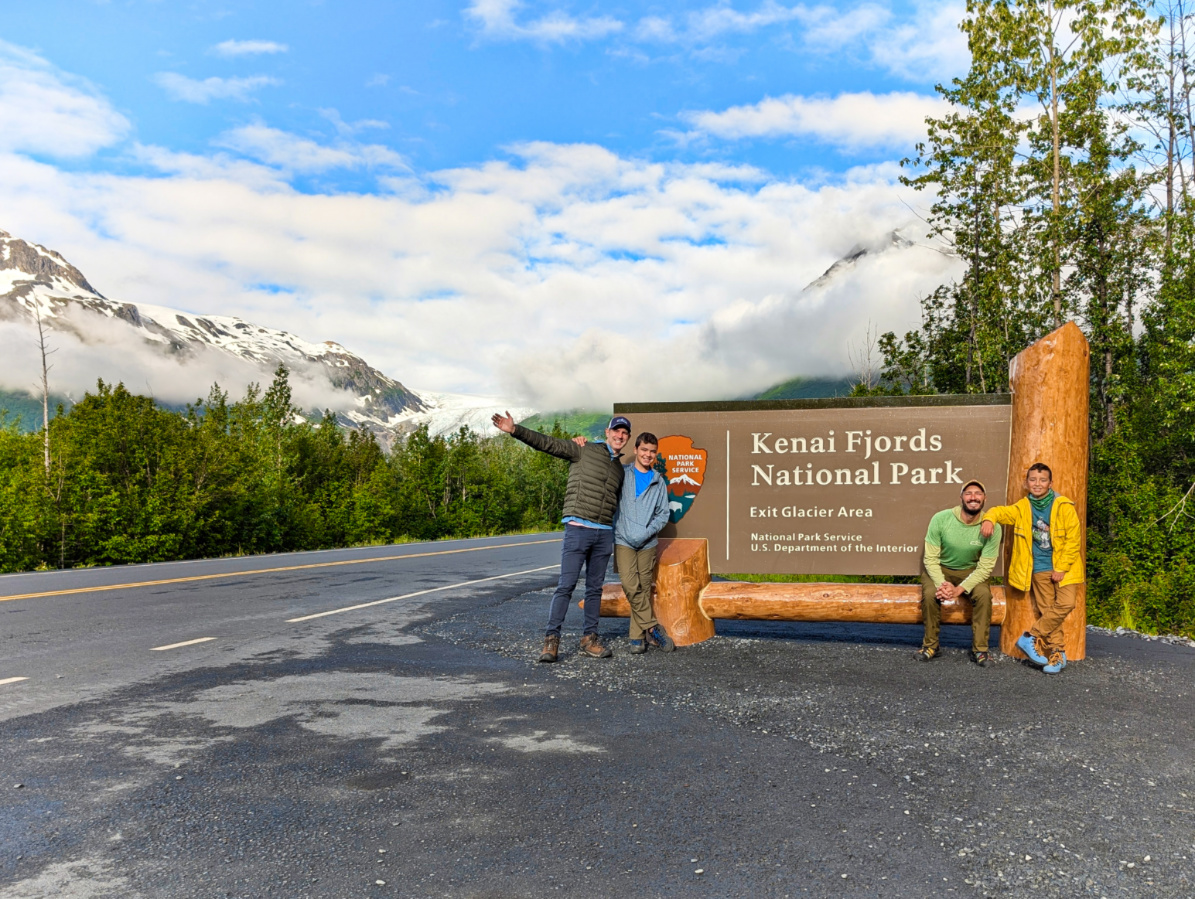
Visiting Kenai Fjords National Park
Okay, so now you’re ready for the bulk of the fun and most important planning tips. Travel to Alaska is best when you’ve thoughtfully spent time planning! The park is open year-round, but the primary visiting season is from June to August. May and September offer reduced services and fewer tours, but you can still visit. If you’re visiting in May or September, keep in mind that the majority of humpback and gray whales will have already started their voyage back to the Hawaiian Islands or Baja Mexico, so your wildlife sighting may not be the grand breaching whales you expect.
For June, July and early August visits, you’ll get some of the best marine mammal experiences. This is when you can expect to see the greatest number of humpback, gray, minke and orca whales, as well as the occasional Pacific white sided dolphin and Dall’s porpoises. The summer months also bring some of the best calving of the tidewater glaciers, which is always amazing to experience.
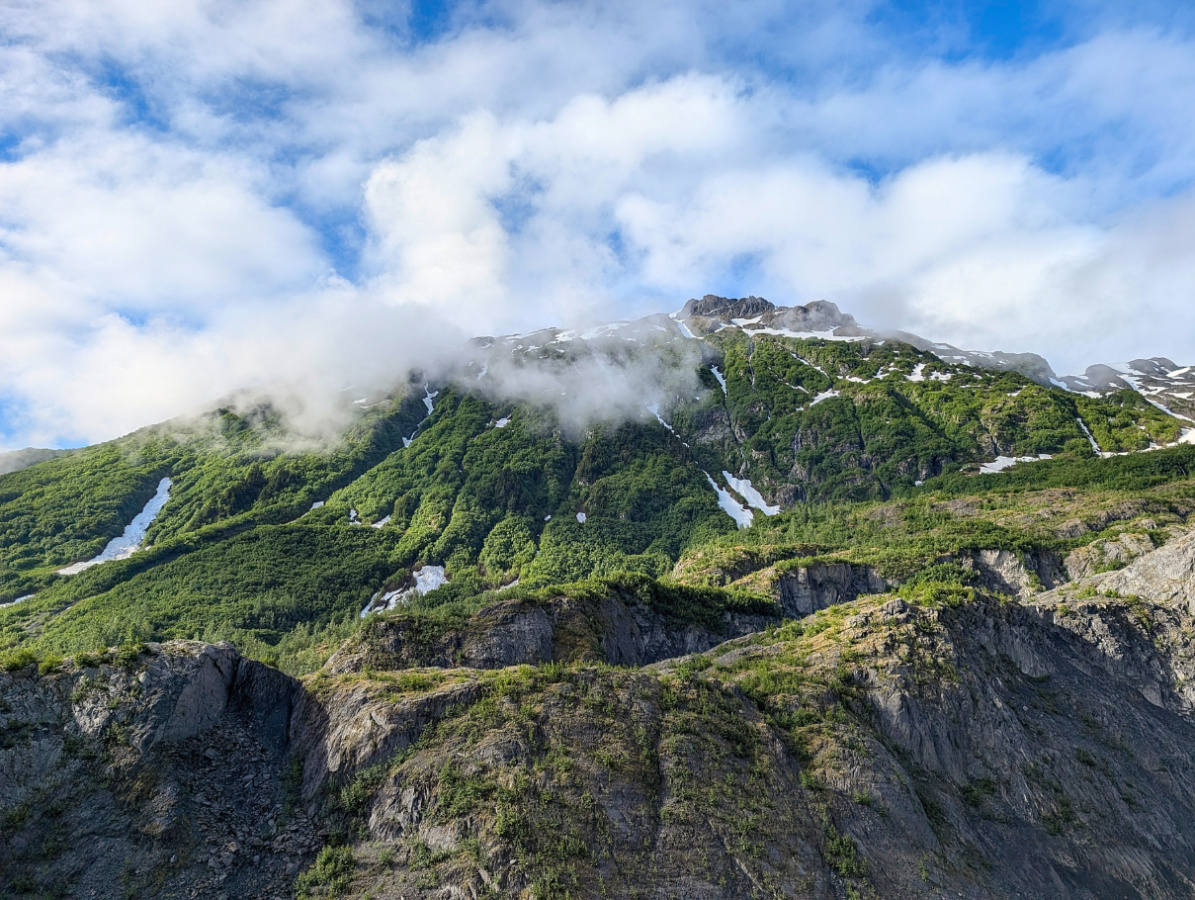
Weather in Kenai Fjords National Park
The weather can vary (hello, Alaska is crazy about quick changes), but summer temperatures generally range from 40°F to 60°F. Rain is common, so when you visit you should be prepared for wet conditions no matter the forecast. Having lived on the Kenai Peninsula, I’ve experienced late snow in spring and also 40 days of no rain and 80 degree temperatures in the summer. The weather inland on the peninsula doesn’t always match what’s happening in Kenai Fjords though, so be ready for it all.
If you’re hiking at Exit Glacier and the weather is looking iffy or like a cold front may slide off the Harding Icefield to where you are, plan for shorter hikes for your own health and safety. If you’re planning a big hike up to the icefield, make smart decisions about how far to go if you see the weather shifting.
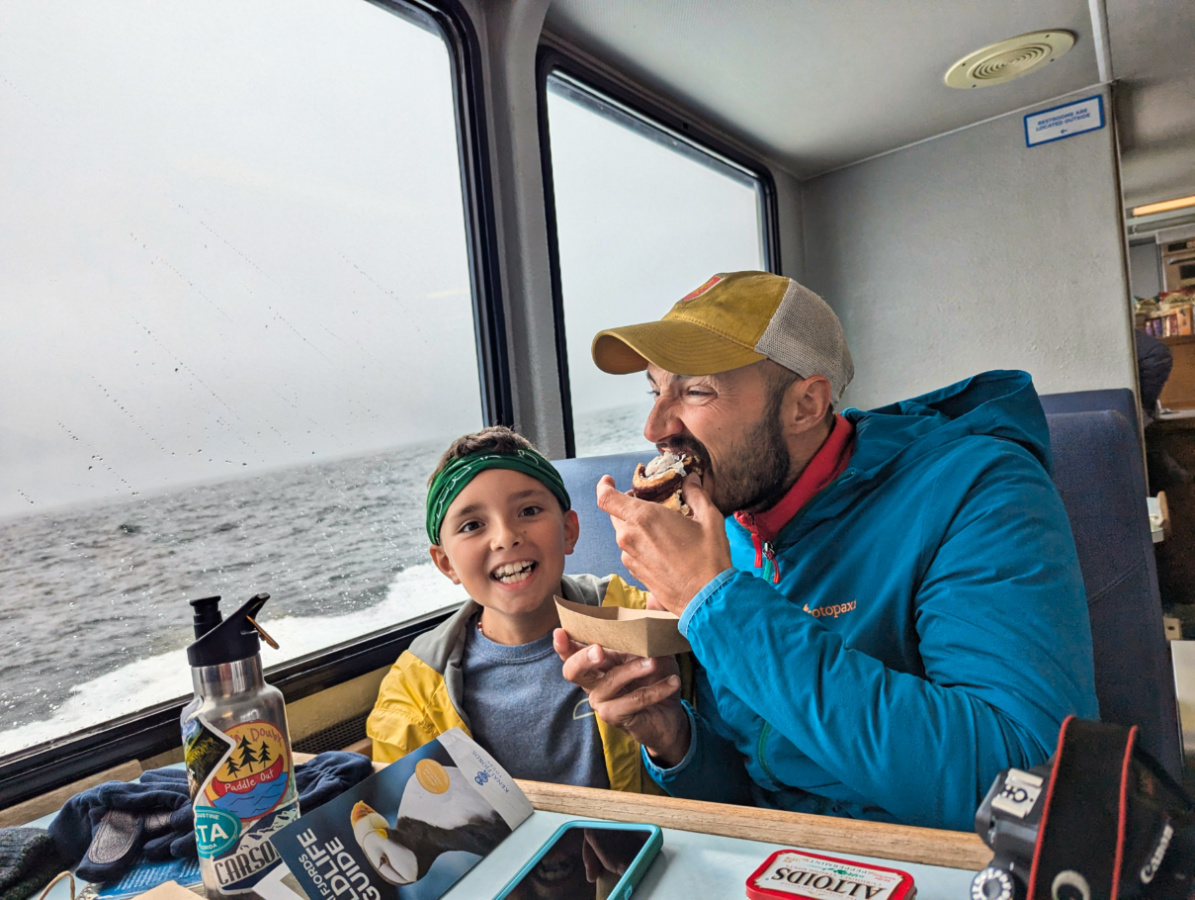
Being Prepared for a Visit
Whether you’re hiking or doing a boat tour of Kenai Fjords National Park, visitors should bring warm, waterproof clothing, binoculars for wildlife viewing, and a good camera. When you’re on land, wildlife tends to be rather far away for the most part, with the occasional bear sighting in the Exit Glacier area being a little closer than some like. That’s why it’s good to bring binoculars, both for hiking and for boat tours.
Also, because the weather is ever-changing on the Kenai Peninsula, dressing in layers is key to staying comfortable. Between windy conditions at sea and random cloudbursts when you’re hiking, staying warm and dry is very important. I really like our light layer waterproof jackets when we’re someplace like Kenai Fjords National Park..
Check out our sister site, My Alaska Trip!
Lastly, if you’ve spent the money to get to Alaska and paid the price of admission for an eight hour boat tour of Kenai Fjords NP, you’ll want to be able to capture some great photos. A good camera is a necessity in my book, and I recommend at least a 250mm lens. I use a 600mm lens on my Canon Rebel t7i body and it does an amazing job of getting my eyes up close to wildlife, but also, for boat tours when it’s a bit rough, using a large lens can be difficult and you may miss out on the wildlife VIEWING experience if you’re either not well versed in your gear or if you’re struggling with looking through a lens on the high seas.
If you’ve more of a binoculars person vs photography, the Vortex Diamondback binocs are amazing. We love them and they’re the most effective, hardy binoculars we’ve had. Get the Vortex Diamondback binoculars here!
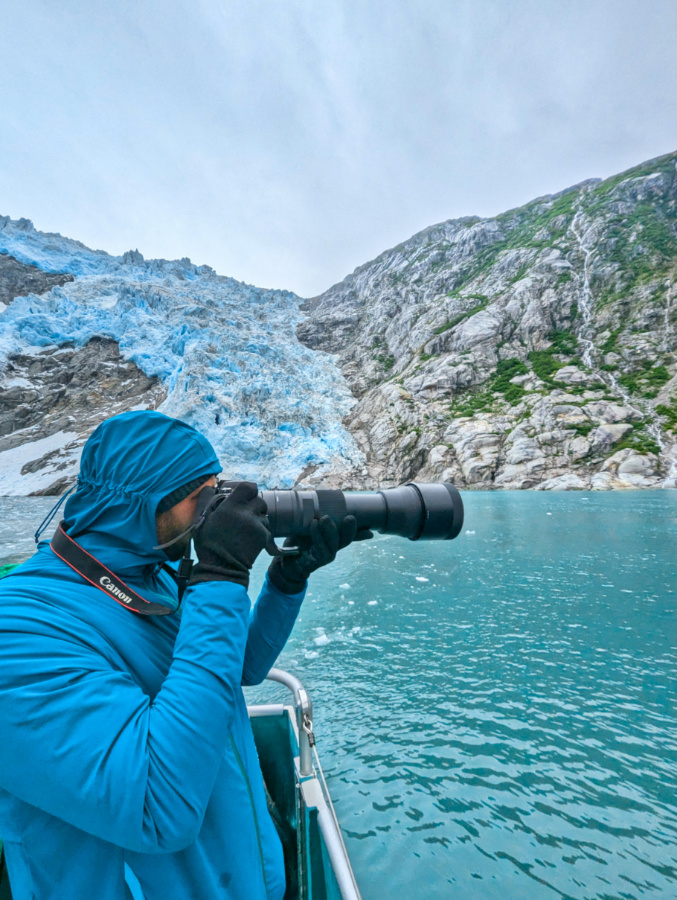
Where to Stay for Kenai Fjords
The easiest answer for where to stay to visit Kenai Fjords National Park is to get a hotel in Seward… but there aren’t many and they are pricey. There are some good options, in particular the Seward Windsong Lodge, but depending on how far in advance you’re booking your visit, you may need to look in Moose Pass or Cooper Landing. Moose Pass is a half hour north and then Cooper Landing is on the Sterling Highway north and west of Seward.
When you’re looking for a hotel that’s directly in Seward, keep an open mind and remember that you’re really only there to sleep at the end of a long day of fun. From downtown to the north end of town past the marina, there are probably 12 options. None of them are too fancy and in high season you can expect to pay between $200 – $400 per night after tax.
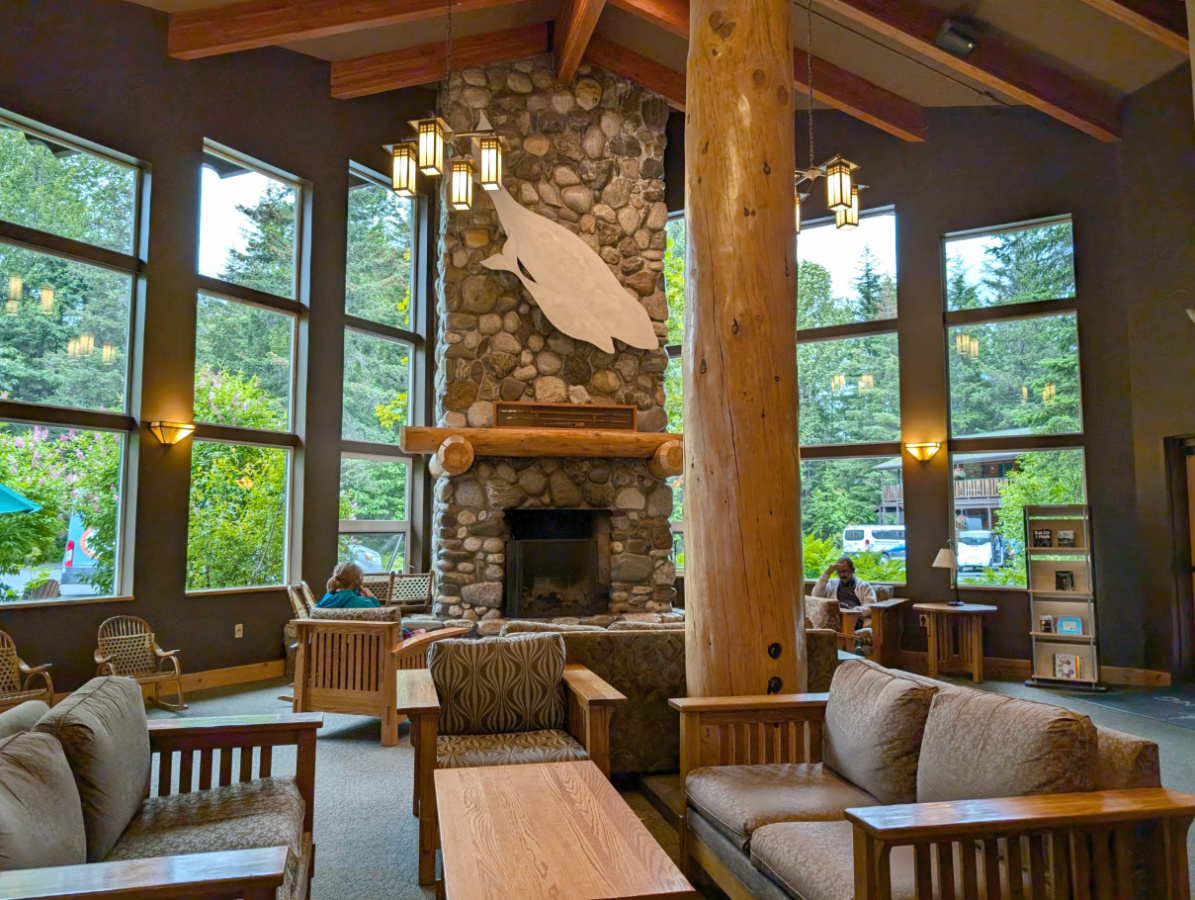
We had a great stay at the Seward Windsong Lodge, located on the road to Exit Glacier. I love that it was away from the main highway, it was quiet and our room was plenty large for the four of us. Also, we had outdoor space due to the large shared decks at the lodge. The Resurrection Roadhouse is the on-property restaurant, and it was actually really good. We ate there twice, we enjoyed it so much.
Note: the Seward Windsong Lodge is managed by the same hospitality group as the Belton Chalet and Glacier Park Lodge at Glacier National Park, and the Prince of Wales Hotel in Waterton and Mount Royal Hotel in Banff (both in Canada). They all have exceptional dining, which we don’t often find in popular tourist lodge locations.
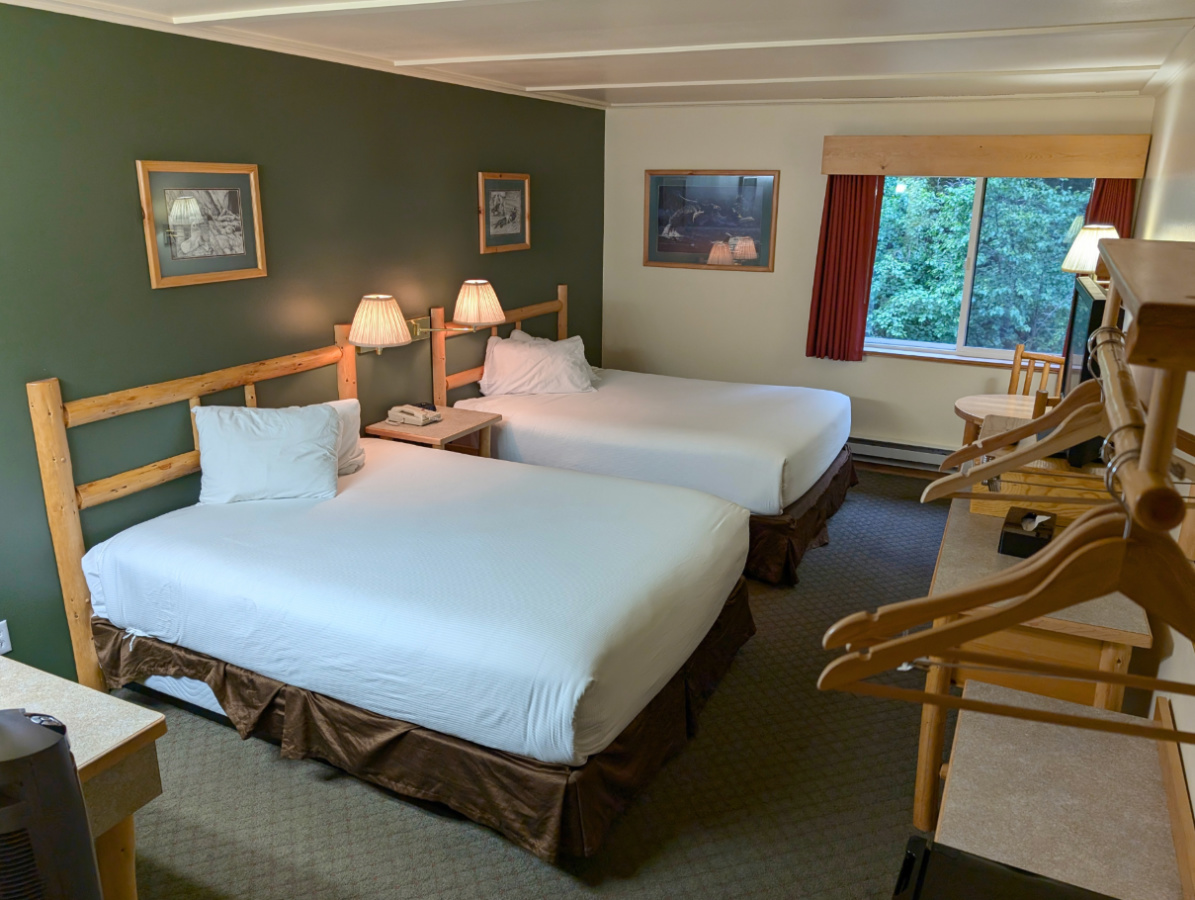
The Kenai Fjords Wilderness Lodge on Fox Island is another option. It’s operated by the same group (Pursuit) as the boat tours and the Seward Windsong Lodge. This stay is all about being remote, kayaking and enjoying a different sort of Kenai experience.
For the person who’s got the budget and wants to be fully immersed, there is also the Kenai Fjords Glacier Lodge. This is managed by Alaska Wildland Adventures and is a very niche, luxe experience. I know it’s not in our budget, but it looks like a great trip!
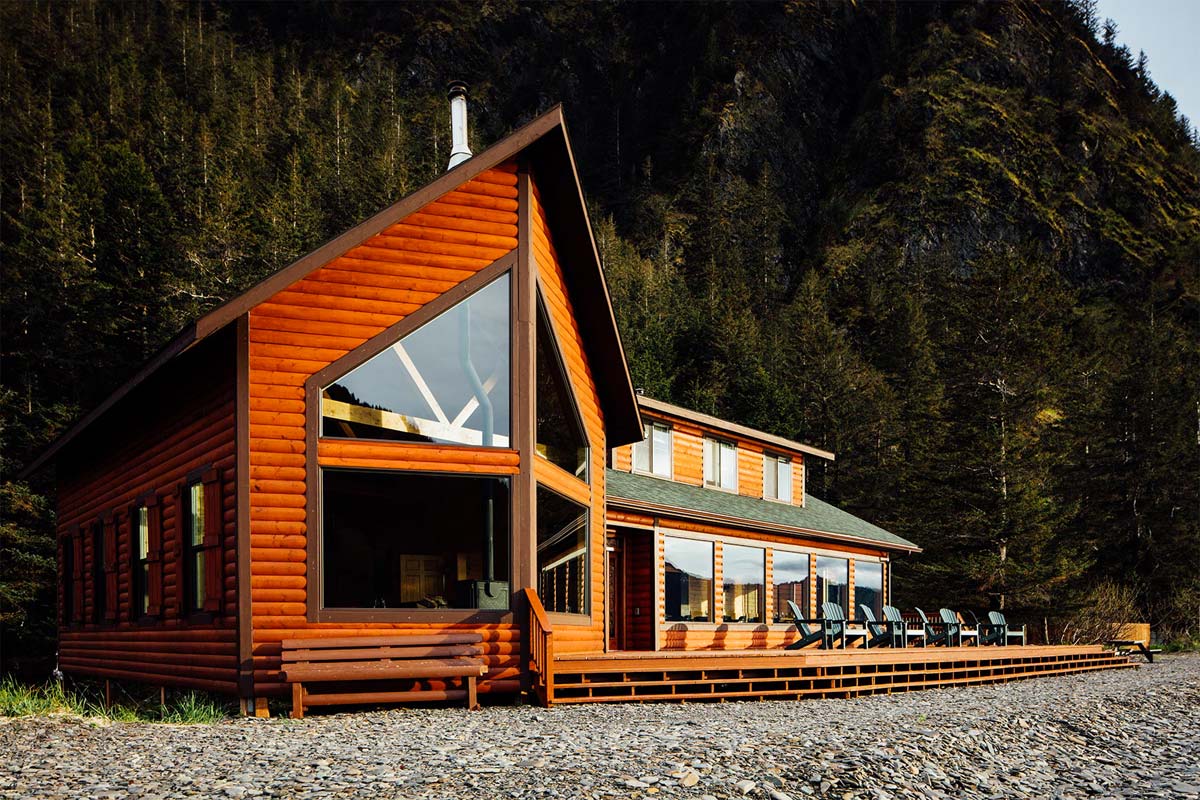
Camping at Exit Glacier in the Park
There is actually camping at Kenai Fjords National Park. I’ve camped at Exit Glacier several times and love it, but it is all first-come-first-serve. The campground is small (only 12 sites) but spacious and quiet. You can always hear the river and the wind in the trees, so that drowns out the sounds of other campers quite well. I will say though, for hiking, you can leave directly from your campsite to the Exit Glacier trails, but it’s a long walk to the main trailhead and visitor center.
Note: yes, there are some cabins in Kenai Fjords National Park but they are remote and there are only two of them. If you really want to be rustic and add a level of epic to your visit, you could try to book one of them and do the boat or float plane ride to them. There is one on Aialik Bay and one on Holgate Arm.
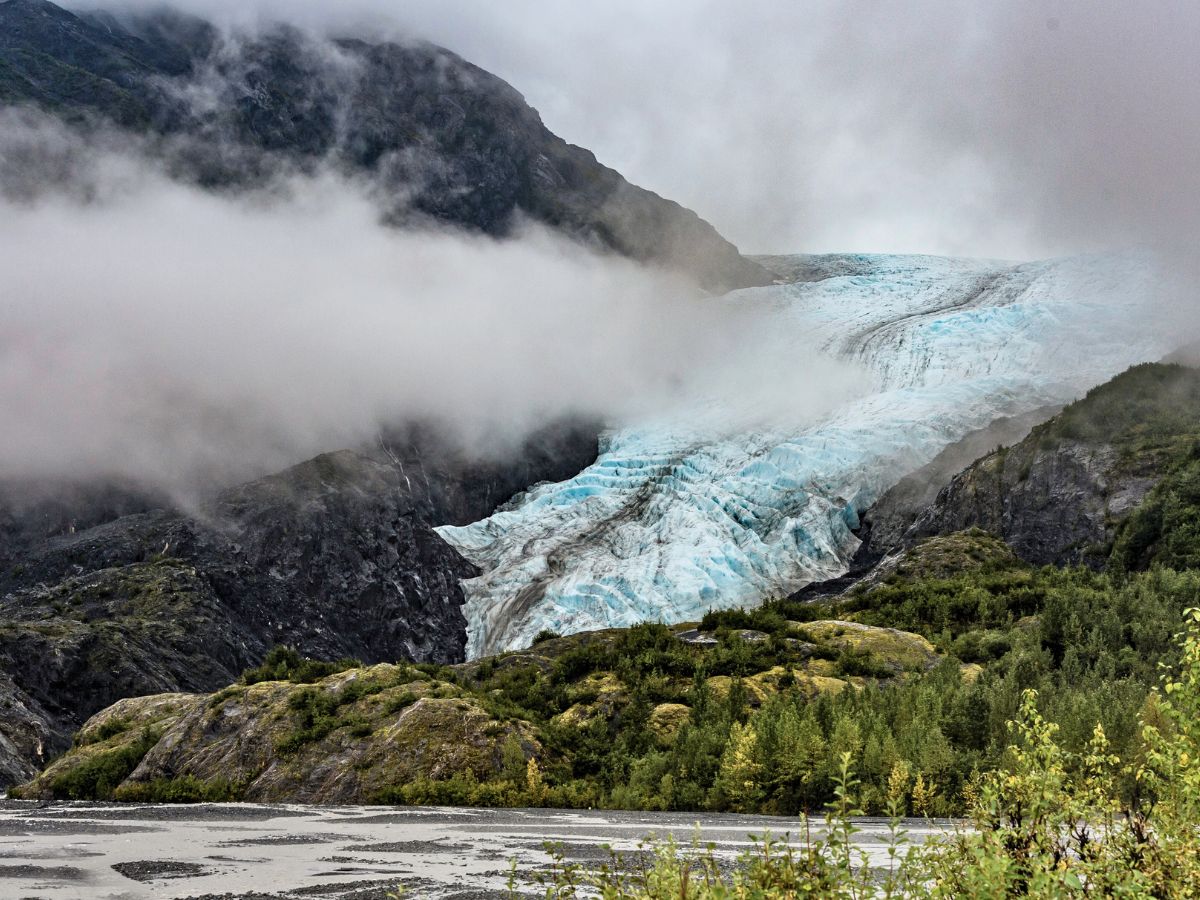
Things to Do at Kenai Fjords National Park
I, like most people visiting Kenai Fjords National Park, have the most memorable experiences on the boat trips into the park. The major features of the complete National Park area include the Harding Icefield, Exit Glacier, and various fjords such as Aialik Bay and the Northwestern Fjord.. Visitors can enjoy boat tours, kayaking, hiking, and wildlife viewing, all depending on what sort of trip you want to have.
The Harding Icefield Trail is a popular hiking route if you’re hardcore and have avalanche training and the proper equipment. The icefield itself is enormous, covering 700 square miles, but there are backcountry routes that experienced hikers and ice-folk enjoy. But let’s talk about what most people, including frequent visitors, like to do in Kenai Fjords National Park.
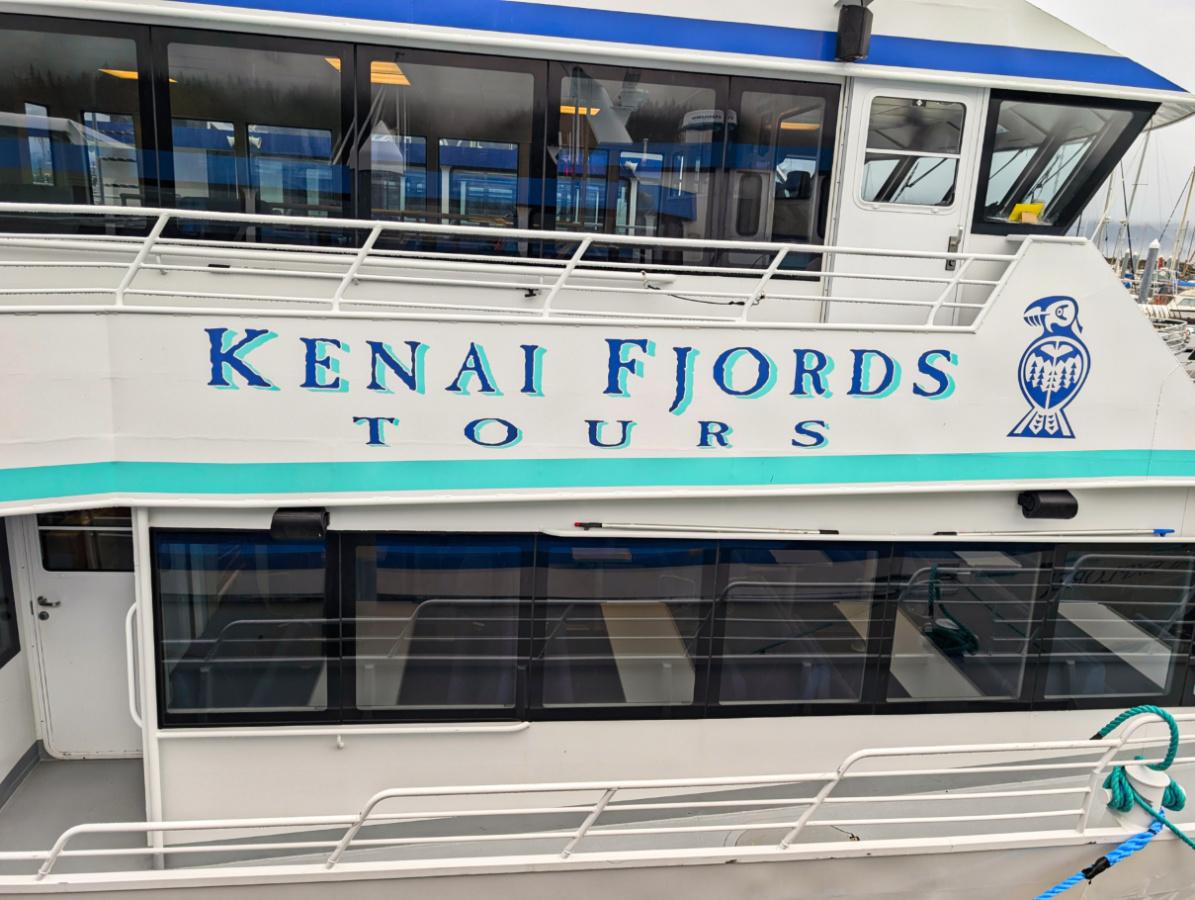
Kenai Fjords Boat Tours
Truly, I think the best tourist attraction in all of Alaska is the Kenai Fjords National Park boat tour. Kenai Fjords Tours, or KFT as we used to call it at work, is the operator that takes the majority of visitors to different parts of the national park. They have a variety of tour lengths going to different parts of the book. If you want to have an all-day adventure, you go as far as possible, you can spend 9 hours learning about nature and seeing some incredible wildlife. If you want to kayak, Kenai Fjords Tours can take you out to Fox Island and help you experience kayaking on Resurrection Bay, watching for sea otters and whales on the way.
There are shorter length tours as well, if you can only do half a day off of the water. You don’t get to go as far, but the wildlife is still amazing and you’ll still get to see tidal glaciers. These are all the tour options available during most of summer season:
- Kenai Fjords National Park Tour – 6 hours – includes lunch and some snacks, visits Aialik or Holgate Glacier OR do the same route and add dinner on Fox Island
- Northwestern Fjord Tour **MY FAVORITE** – 8 hours – includes light breakfast and lunch w/ some snacks, visits Northwestern, Northeastern, Redstone and Southwest Glacier (one fjord has them all)
- Resurrection Bay Tour w/ Fox Island – 5 hours – includes dinner on For Island at the day lodge
- Glacier Dinner Cruise – 5.5 hours – includes dinner onboard (drinks are extra), visits Holgate or Aialik Glacier.
- SPRINGTIME ONLY Resurrection Bay Tour – 4 hours, March – May – includes lunch, doesn’t visit any glaciers but is for wildlife watching
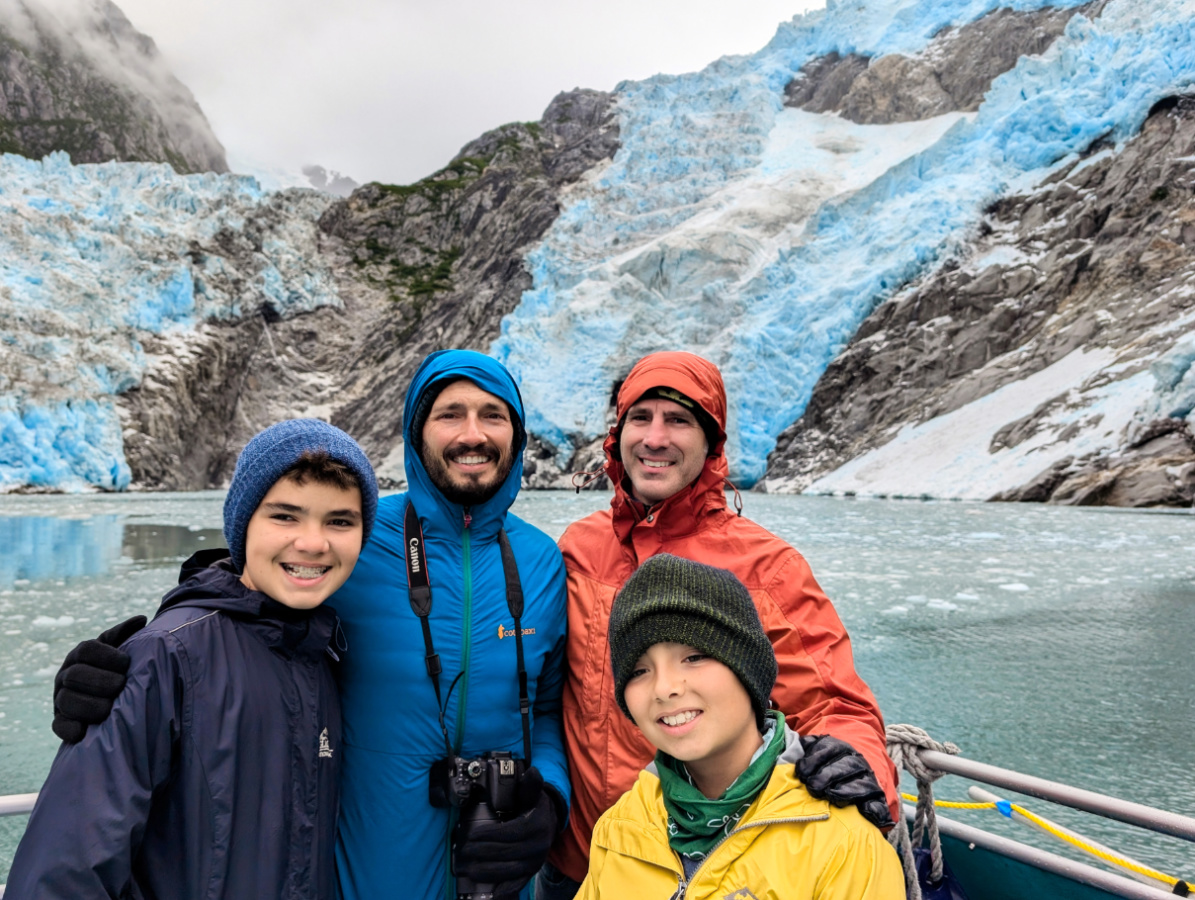
Seasickness on the Boat Tours
There are days that you go out into Kenai Fjords National Park and it is wonderfully calm with just a little bit of sea swell. And then there are days when the Gulf of Alaska sends all of the wind and waves directly to your boat. I wish the latter wasn’t true, but it definitely is. The best ways to fight seasickness on a Kenai Fjords tour is by remaining on the lowest deck of the ship and more towards the back and center. If you are on the talk Deck near the front you will be getting much more of both the side to side movement and the up and down movement of the waves.
It’s not uncommon for people to feel queasy when the seas are a bit rough or when the ship crosses the Harding Passage. If you can sit on the back of the boat on the bottom deck and just breathe the fresh air, that should make you feel a good deal better. The crew is well trained to help seasick passengers though, so if you do need to vomit, they will make sure you have everything you need to stay clean and sanitary.
Some people like to use seasickness patches or tablets. If you know that they don’t make you fall asleep, that could be a great option for you. I have found that both Dramamine and meclizine make me fall asleep rather quickly (meclizine less so), so I don’t like to take either one when I am on the Kenai Fjords tour or other boat sightseeing. You don’t want to fall asleep and miss all of the whales and amazing sights.
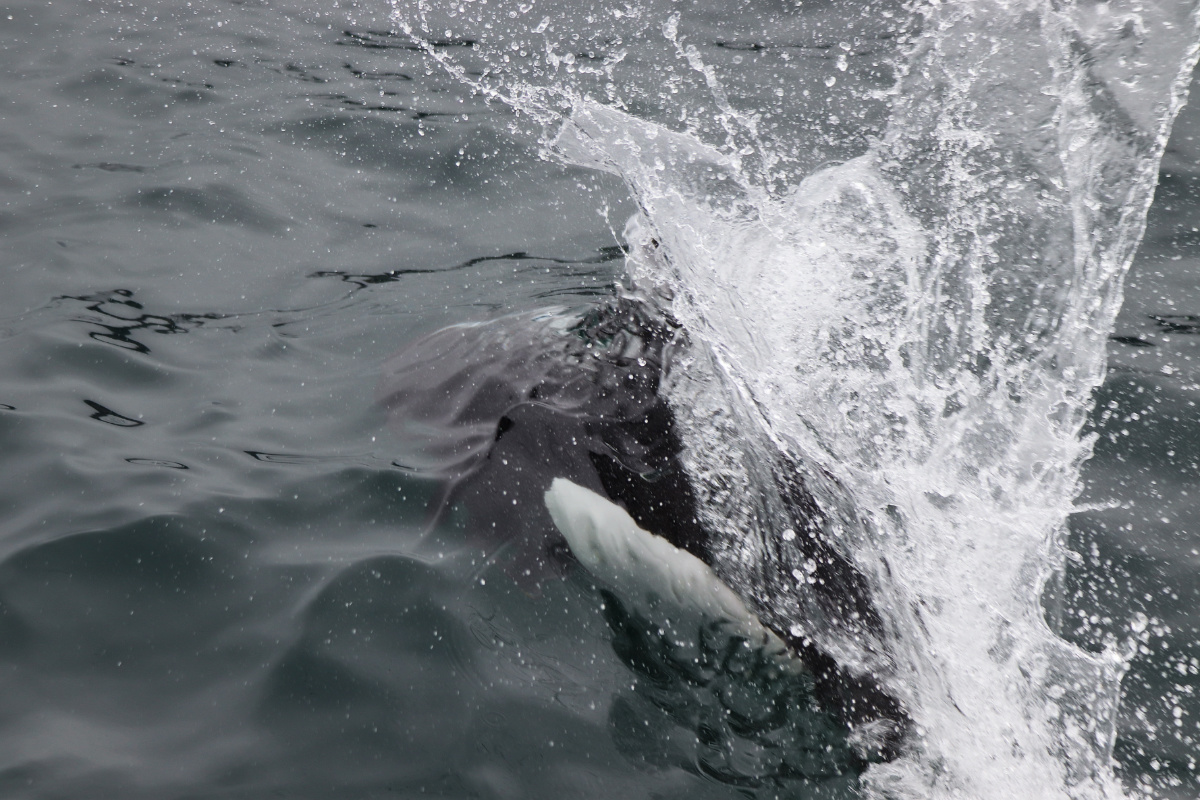
Hiking at Exit Glacier
While hiking at Exit Glacier is not experiencing the fjords themselves, it still is a beautiful part of the national park. There are a variety of trails to be able to see Exit Glacier and enjoy the Boreal forest in this part of the Kenai Peninsula. There are even wheelchair accessible portions of the trail!
The Glacier View Loop trail is wheelchair accessible and is nicely paved for more than half of it, and then well maintained where it isn’t paved. The Glacier Overlook Trail is my favorite, and is very easy with kids. Yes, there’s a little climb to it, but you can do the whole thing up and back in less than 1.5 hours.
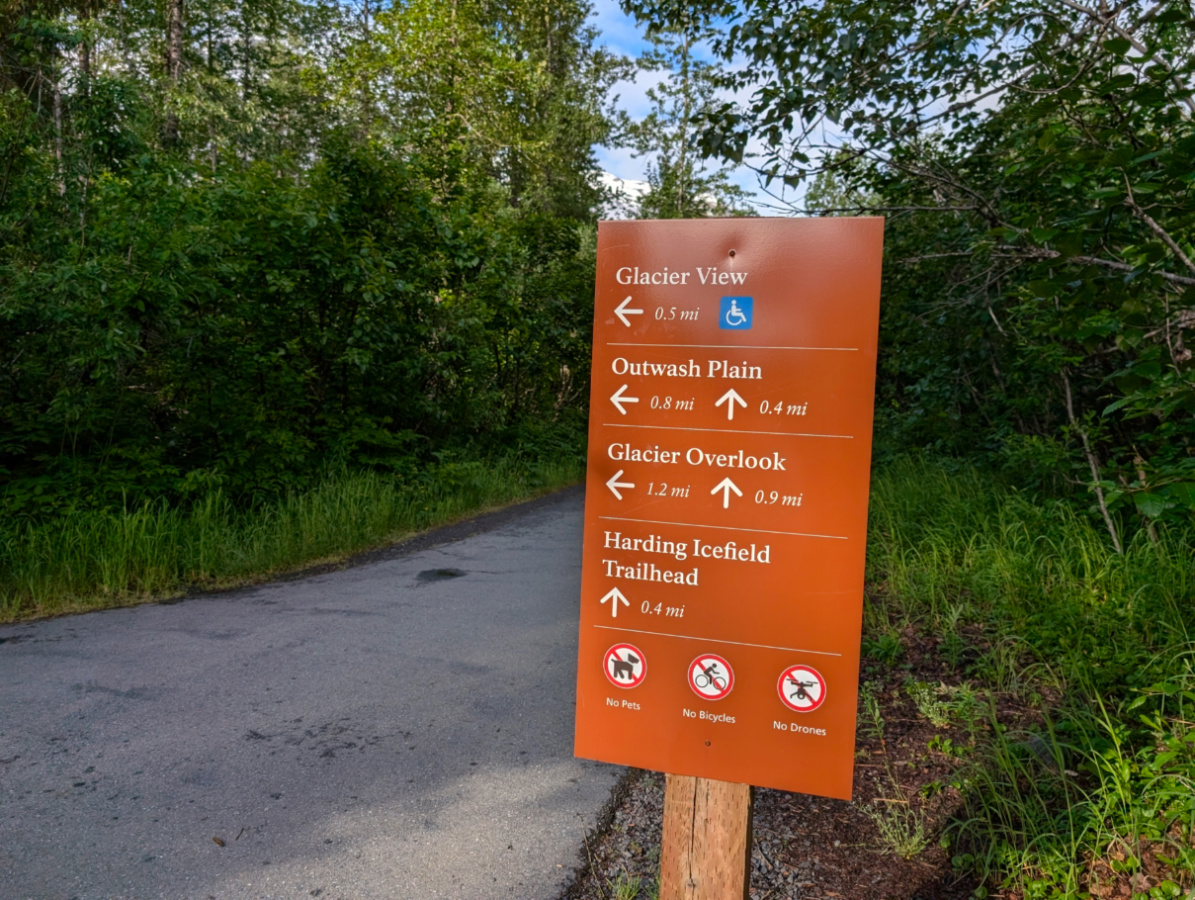
Note: it was wild to do this hike in 2024 as I used to do this hike 20+ years ago when the glacier was right next to the end of the trail. I have old film photos of my friends and I standing on the glacier (I know, we weren’t supposed to, but we were young and dumb).
The last trail at Exit Glacier is the most epic you can plan for here: the Harding Icefield. It’s still isn’t crazy long, at just 8 miles round, but you do need knowledge and experience (as well as the right gear) for hiking on ice. Avalanche awareness is also key.
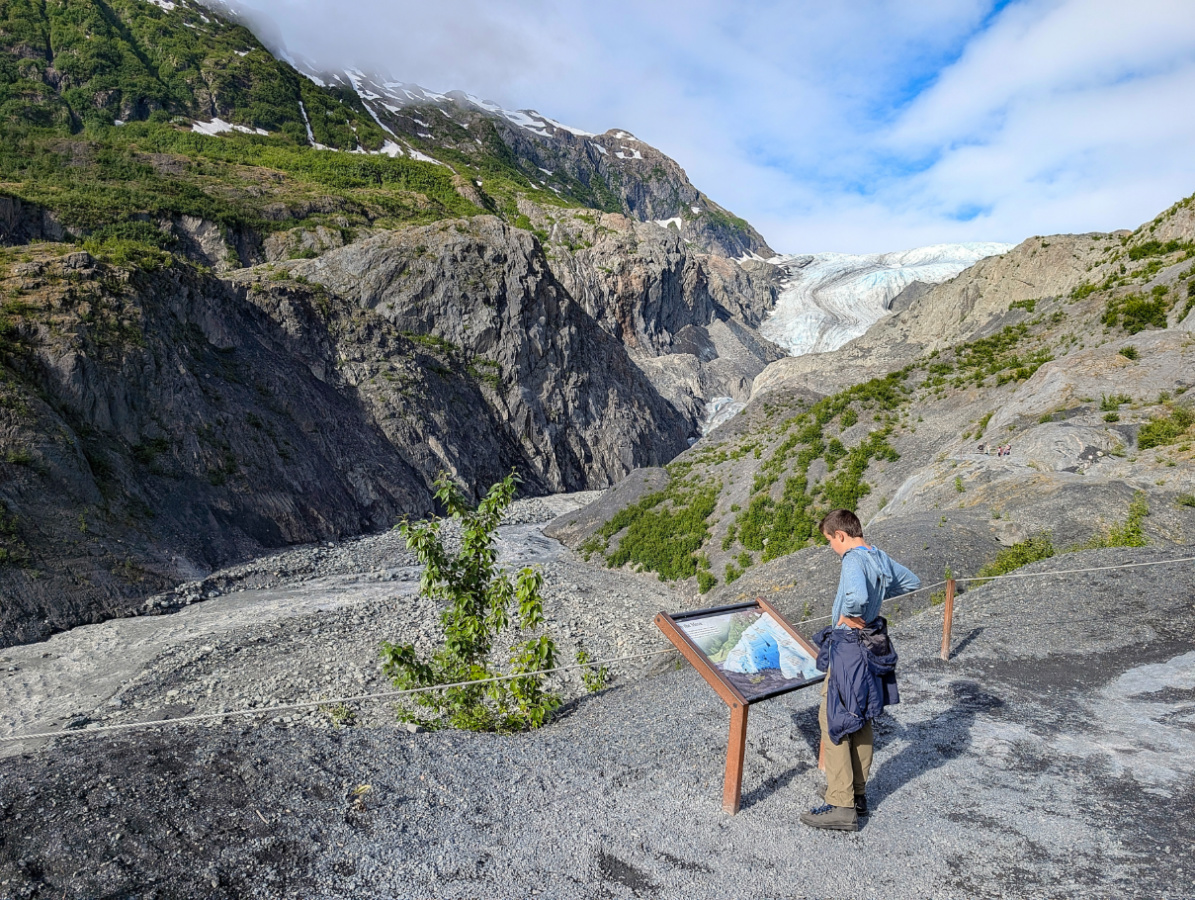
Visitor Centers at Kenai Fjords National Park
The main visitor center is in Seward, open daily in the summer (Memorial Day to Labor Day) from 9:00 am until 7:00 pm. It’s located right next to the Kenai Fjords Tours office, so when you return from your day on the water you can pop into the visitor center to get your National Park Passport stamp and get the scoop on anything that wasn’t covered on your tour. The Exit Glacier Nature Center is also open daily in the summer season when the road it open to vehicles, but only from 10:30 am to 3:30 pm.
Cell service is limited when you’re exploring the park, and even at Exit Glacier that’s not far from the actual town of Seward, there is no service. WiFi is available at the Kenai Fjords National Park Visitor Center in Seward and there’s okay service in town. When you’re on a boat heading out to explore the fjords, you’ll lose service within about fifteen minutes out of the marina while you’re still in Resurrection Bay.
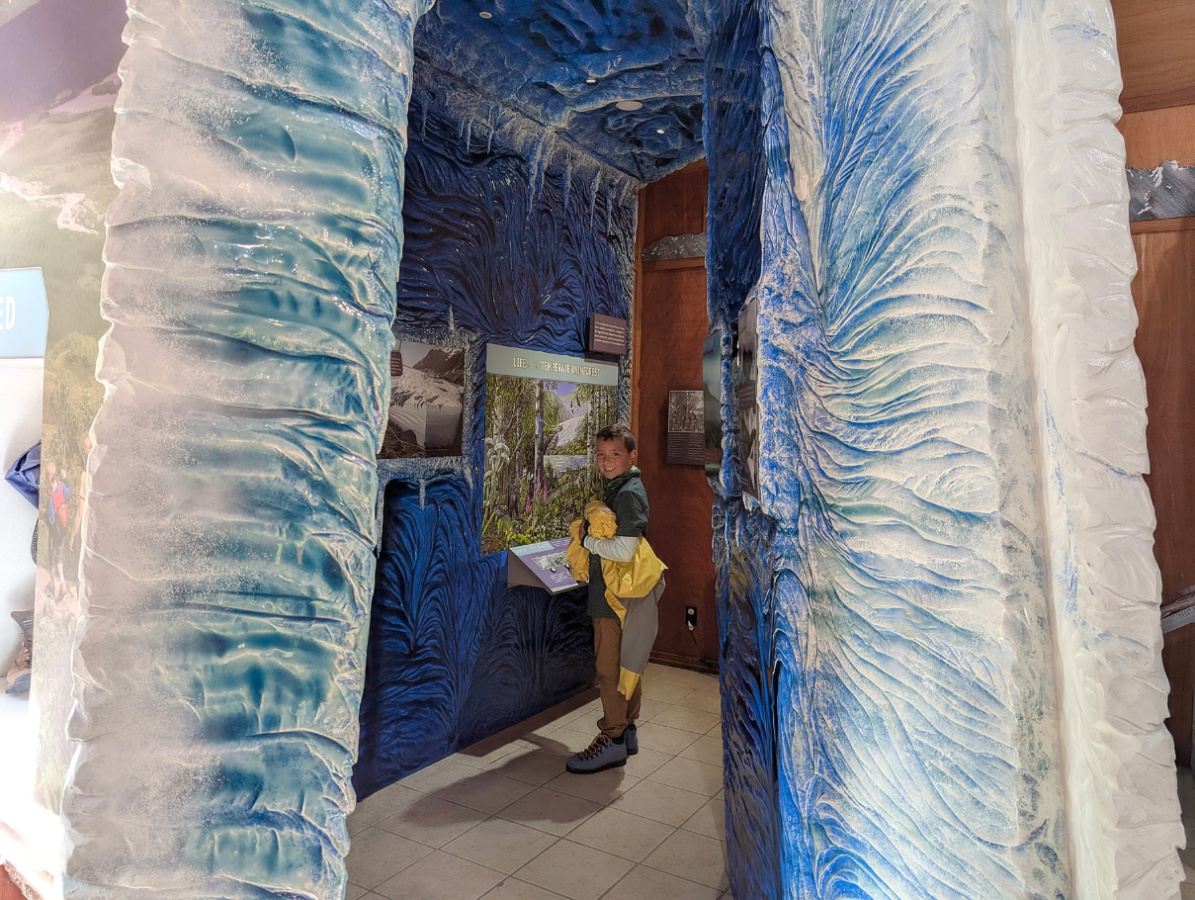
Wildlife Tips for the Best Viewing
But what about the wildlife we’ll see in Kenai Fjords National Park? There is SO MUCH wildlife and you’ll want to get great photos, so we actually have another article all about Photography and Wildlife Watching in Kenai Fjords National Park. Here you can find information about the many species and lots of tips for getting the best photos possible in this amazing place.
In general, the best way to see wildlife when you’re on a Kenai Fjords National Park boat tour is to just listen to the captain and crew. They want you to see everything and will be sure you don’t miss out. The crew are naturalist in addition to being your helpers on the trip, so they can share lots of good info and help you see creatures. On a nice day, the best place for wildlife watching on any of the boats is at the bow. This part of the boat allows you to move to either side easily. The top deck is best for watching whales because they really are so large, but if the seas are rocky, it’ll be more difficult to be stable for photos up there.
Patient eyes are key to spotting wildlife. If you see flocks of gulls, pay attention to the surface of the water, as that’s likely a “bait ball” of fish that whales are getting ready to eat. Watch the wake off the bow or just behind the boat for Dall’s porpoise, Pacific white-sided dolphins or orcas to ride the waves. When you’re in the fjords near shore, watch the more bare areas of the hills and beaches for bears, mountain goats and Dall sheep. You never know what you’ll see!
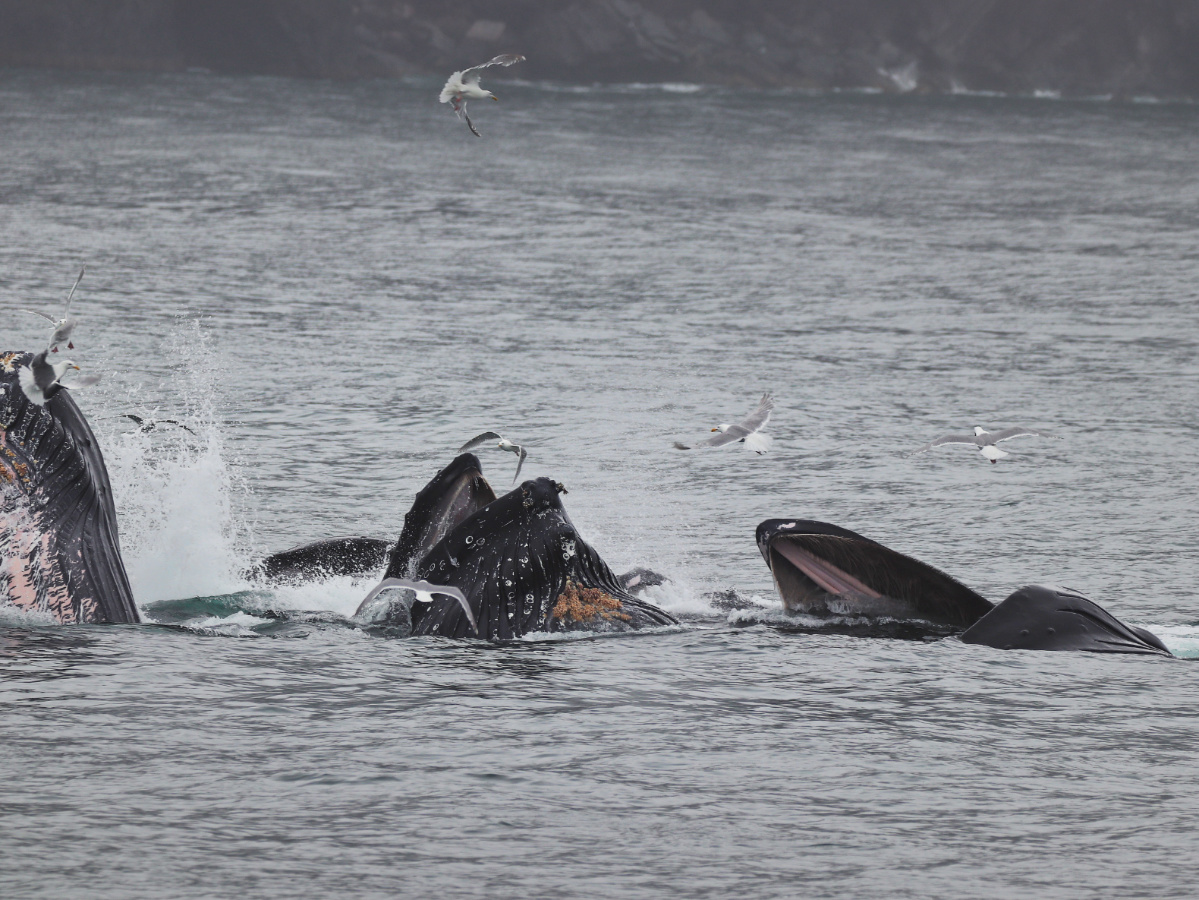
This is everything you need to know for visiting Kenai Fjords National Park in and around Seward, Alaska. If there are any questions or if you think we missed something, please let us know! Feel free to leave a comment or send us a note. We’re always happy to share more to help others plan amazing adventures!
